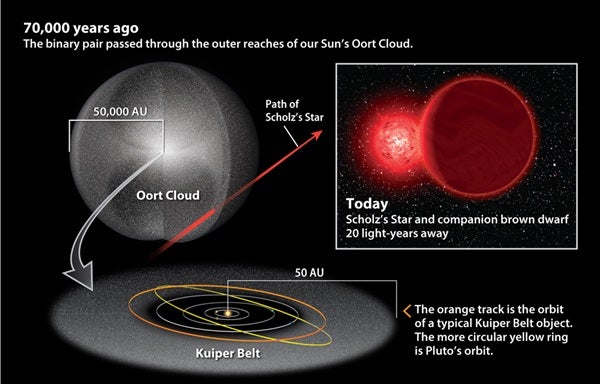The origins of the Oort Cloud have been debated. Older research suggests these icy bodies were ejected from the solar system during its formation. More recently, some researchers have proposed that interactions with other stars in the Sun’s original birth cluster were part of the story, and indeed many or most of the Oort Cloud comets may have even been “stolen” from the vicinity of other stars.
There is a 98 percent likelihood that Scholz’s Star passed through the outer, low-density part of the Oort Cloud.
But the “danger zone,” so to speak, is likely when another star passes within 20,000 astronomical units (1 AU is the average Earth-Sun distance) of the Sun — the so-called inner Oort Cloud — because there are far more comets in this region. In almost every simulation, Scholz’s Star passed well beyond that threshold (only 1 out of 10,000 simulations brought it within 20,000 AU).
Studies do show that a star passing at about 10 times that distance (roughly one parsec) could cause some comets to come into the inner solar system, but there are fewer comets in the Oort Cloud that far out. A recent simulation by a group of German astronomers demonstrated such an encounter would be unlikely to cause a spike in impacts on Earth.
And scientists who study the effects of stellar flybys agree that Scholz’s Star would have had similarly little effect on the Oort Cloud and the long-period comet flux.
University of Rochester, New York










